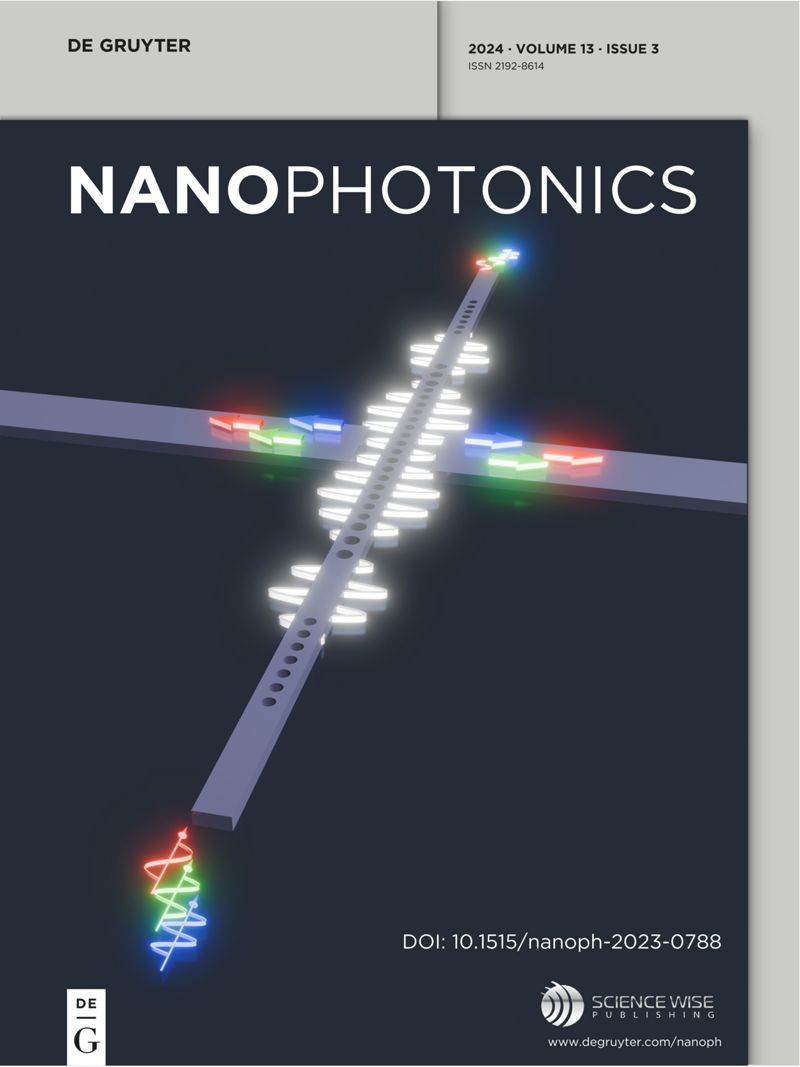Spectral Hadamard microscopy with metasurface-based patterned illumination
IF 6.6
2区 物理与天体物理
Q1 MATERIALS SCIENCE, MULTIDISCIPLINARY
引用次数: 0
Abstract
Hadamard matrices, composed of mutually orthogonal vectors, are widely used in various applications due to their orthogonality. In optical imaging, Hadamard microscopy has been applied to achieve optical sectioning by separating scattering and background noise from desired signals. This method involves sequential illumination using Hadamard patterns and subsequent image processing. However, it typically requires costly light modulation devices, such as digital micromirror devices (DMDs) or spatial light modulators (SLMs), to generate multiple illumination patterns. In this study, we present spectral Hadamard microscopy based on a holographic matasurface. We noticed that certain patterns repeat within other Hadamard patterns under specific condition, allowing the entire set to be reproduced from a single pattern. This finding suggests that generating a single pattern is sufficient to implement Hadamard microscopy. To demonstrate this, we designed a metasurface to generate an illumination pattern and conducted imaging simulations. Results showed that holographic metasurface-based Hadamard microscopy effectively suppressed scattering signals, resulting in clear fluorescent images. Furthermore, we demonstrated that hyperspectral imaging can be achieved with Hadamard microscopy using dispersive optical elements, as the orthogonality of the Hadamard pattern enables to resolve spectral information. The reconstructed hyperspectral images displayed a color distribution closely matching the synthetic hyperspectral images used as ground truth. Our findings suggest that optical sectioning and hyperspectral imaging can be accomplished without light modulation devices, a capability typically unattainable with standard wide-field microscopes. We showed that sophisticated metasurfaces have the potential to replace and enhance conventional optical components, and we anticipate that this study will contribute to advancements in metasurface-based optical microscopy.基于超表面图案照明的光谱哈达玛显微术
阿达玛矩阵是由相互正交的向量组成的,由于其正交性而被广泛应用于各种领域。在光学成像中,阿达玛显微镜已应用于实现光学切片的散射和背景噪声从期望的信号分离。这种方法包括使用阿达玛模式的顺序照明和随后的图像处理。然而,它通常需要昂贵的光调制设备,如数字微镜设备(dmd)或空间光调制器(slm),以产生多种照明模式。在这项研究中,我们提出了基于全息光滑表面的光谱Hadamard显微镜。我们注意到,在特定条件下,某些图案在其他阿达玛图案中重复,从而允许从单个图案中复制整个集合。这一发现表明,产生一个单一的模式是足够的,以实现阿达玛显微镜。为了证明这一点,我们设计了一个超表面来产生照明图案,并进行了成像模拟。结果表明,基于全息超表面的Hadamard显微镜能有效抑制散射信号,获得清晰的荧光图像。此外,我们证明了使用色散光学元件的阿达玛显微镜可以实现高光谱成像,因为阿达玛模式的正交性可以解析光谱信息。重建的高光谱图像显示出与合成的高光谱图像非常接近的颜色分布。我们的研究结果表明,光学切片和高光谱成像可以在没有光调制装置的情况下完成,这是标准宽视场显微镜通常无法实现的能力。我们证明了复杂的超表面具有取代和增强传统光学元件的潜力,我们预计这项研究将有助于基于超表面的光学显微镜的进步。
本文章由计算机程序翻译,如有差异,请以英文原文为准。
求助全文
约1分钟内获得全文
求助全文
来源期刊

Nanophotonics
NANOSCIENCE & NANOTECHNOLOGY-MATERIALS SCIENCE, MULTIDISCIPLINARY
CiteScore
13.50
自引率
6.70%
发文量
358
审稿时长
7 weeks
期刊介绍:
Nanophotonics, published in collaboration with Sciencewise, is a prestigious journal that showcases recent international research results, notable advancements in the field, and innovative applications. It is regarded as one of the leading publications in the realm of nanophotonics and encompasses a range of article types including research articles, selectively invited reviews, letters, and perspectives.
The journal specifically delves into the study of photon interaction with nano-structures, such as carbon nano-tubes, nano metal particles, nano crystals, semiconductor nano dots, photonic crystals, tissue, and DNA. It offers comprehensive coverage of the most up-to-date discoveries, making it an essential resource for physicists, engineers, and material scientists.
 求助内容:
求助内容: 应助结果提醒方式:
应助结果提醒方式:


